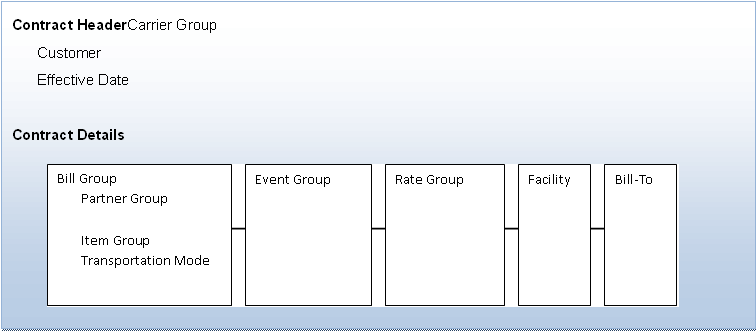Configuring a New Customer Contract
Contracts identify the services and associated rates you charge each customer (in Billing, the Customer refers to the party that owns the inventory stored and processed in your facility). The system uses information from the contract record to determine when to accrue charges for a specific customer.
You must create a contract for each customer to whom you provide services. The contract is setup at an enterprise level so that rates can easily be shared across facilities. The system uses information from the contract record to determine when, how, and for how much to charge a specific customer.

The detail lines of a contract will associate any bill groups with a corresponding event group, rate group, and facility, and identify the entity that should be billed for the charge. Generally, you can create a single contract line to identify all the events and rates that are identical regardless of facility or bill group. You can then add additional lines for rates that differ by facility, trading partner, carrier, item, location, or transportation mode.
The system uses the contract record when:
- Inventory is received into the
facility
When inventory is received, the system finds the contract for the inventory owner. The system looks at the event groups listed on the contract for any recurring rules. Based on the recurring rule information, the system determines the next bill date for recurring charges and maintains that date information on an inventory date record.
- A system transaction occurs
When a billing-related transaction type occurs on the system, the system reviews the event groups on the contract record to determine if there are any matching events listed. If it finds matching events, the system then checks the rate group to find the rate for the associated charge codes. The system then uses the information from both the event group and the rate group to calculate charges for the transaction.
- A billing period elapses
A regular system process searches through the inventory records to determine when recurring charges are ready to accrue. When the system finds inventory that has reached the next bill date, it reviews the contract record to find the rate and charge details and then calculates the recurring charges.